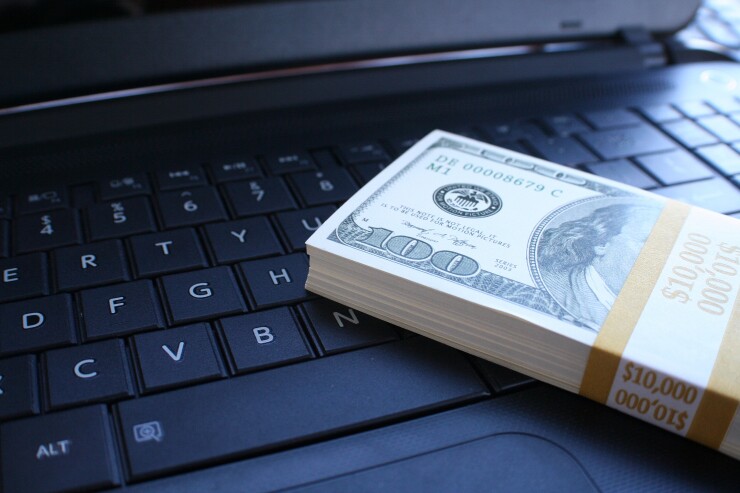
Over the last few years, several large and regional banks have started offering small-dollar loans to their cash-strapped customers. Now the question is: How many Americans are using the products?
A new survey — conducted by the Online Lenders Alliance, a trade group whose members offer payday loans and expensive installment loans — finds that some customers of banks that offer the products are still turning to higher-cost lenders.
The group says the findings show that its member companies offer a critical service for consumers that should not be curbed through new regulations.
But those who support banks' efforts to launch small-dollar loan products say the results are not surprising — since the products are
More banks are planning to launch their own small-dollar loan products, and those that already have them are seeing momentum, said Alex Horowitz, who tracks the issue at the Pew Charitable Trusts.
"They're reaching a lot of customers they've never reached before — people who have used payday loans, people who have overdrafted, people whose credit scores would not qualify them for a credit card," Horowitz said.
To help with the process, Pew recently
Still, roughly 28% of customers at four companies that are members of the Online Lenders Alliance have banking relationships with those six institutions, the
The survey did not explore why these consumers may be using alternative lenders instead of their banks, though potential reasons might include limited marketing by banks and the existing relationships that many consumers have with alternative lenders.
Some bank customers may be looking elsewhere because they aren't eligible to borrow from their own banks, the Online Lenders Alliance said.
In order to qualify for a small-dollar loan at some banks, a borrower must have been a checking account customer for a certain length of time. Those minimum requirements range from three to 12 months.
Andrew Duke, executive director at the Online Lenders Alliance, pushed back against what he called a "false narrative" that the existence of banks' small-dollar loan products means other options aren't needed.
"More options for consumers results in better outcomes," he said. "We're not opposed to banks or credit unions offering small-dollar loan products to consumers. … However, we are opposed to groups misrepresenting the impact of those options and citing that false narrative to push legislation that would remove some of the options that are available today."
The trade group has fought efforts to implement a 36% annual percentage rate cap, either nationally or in
The recent momentum in bank small-dollar lending follows
The Consumer Bankers Association believes policymakers "can encourage an even greater share of the industry to enter the small dollar market by providing increased regulatory certainty and reasonable APR expectations," CBA general counsel David Pommerehn said in a statement.
CBA has
"Banks remain fully committed to expanding access to these financial tools, including accessible small-dollar loans, which are safer and more affordable for customers who otherwise may be forced to meet their needs through payday lenders and other less-regulated venues that operate without any federal oversight," Pommerehn said.
Lauren Saunders, associate director at the National Consumer Law Center, said the survey's findings are not surprising, given that high-cost lenders "aggressively market" their loans.
She also said banks' small-dollar loan products are a good option as long as they charge APRs below 36%. The loans are a far better choice than overdraft fees, payday loans or high-cost installment loans, she said.
"It's a positive development that we are seeing banks offering affordable small-dollar loans," Saunders said.






